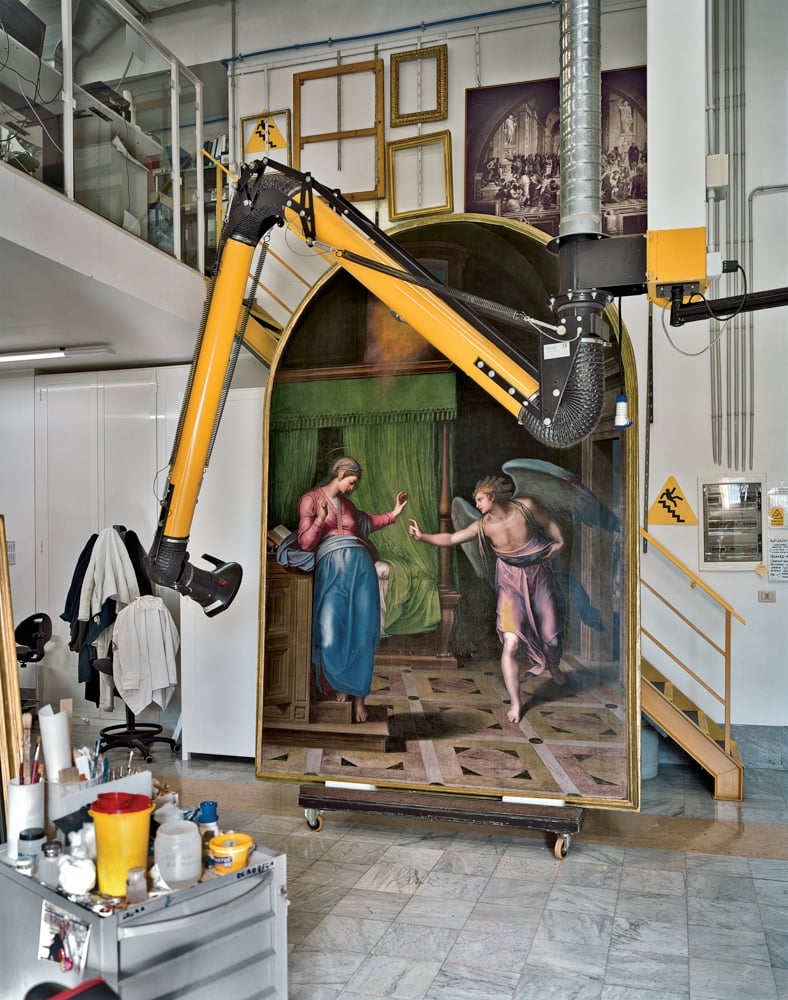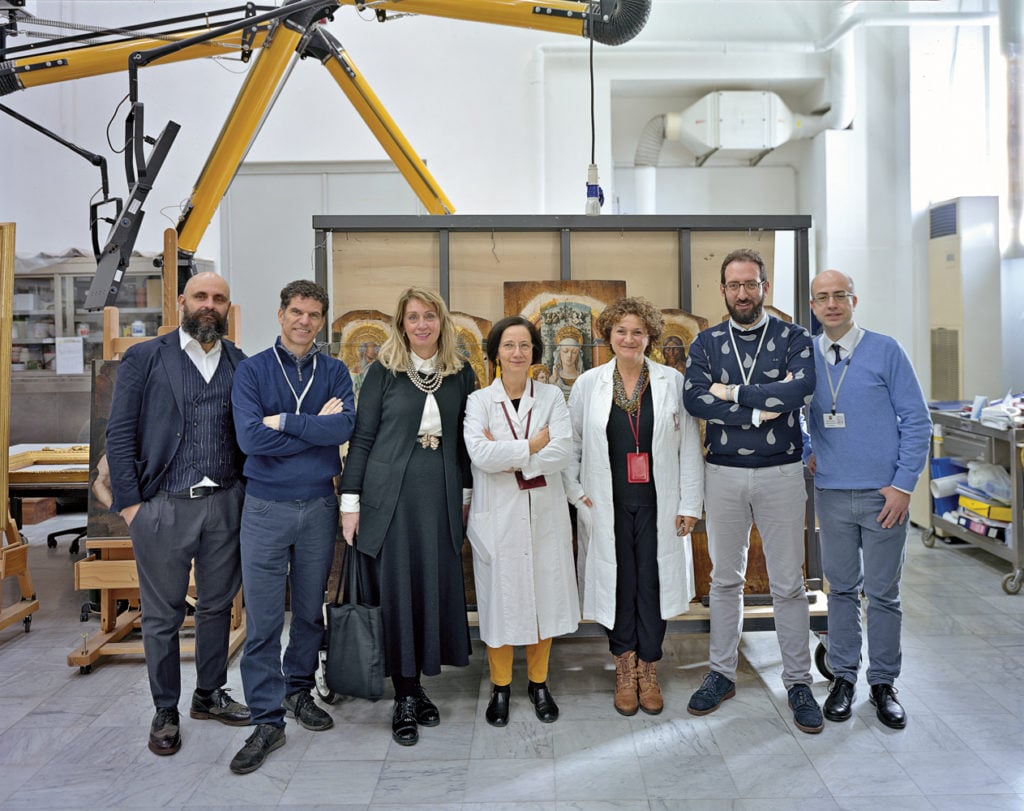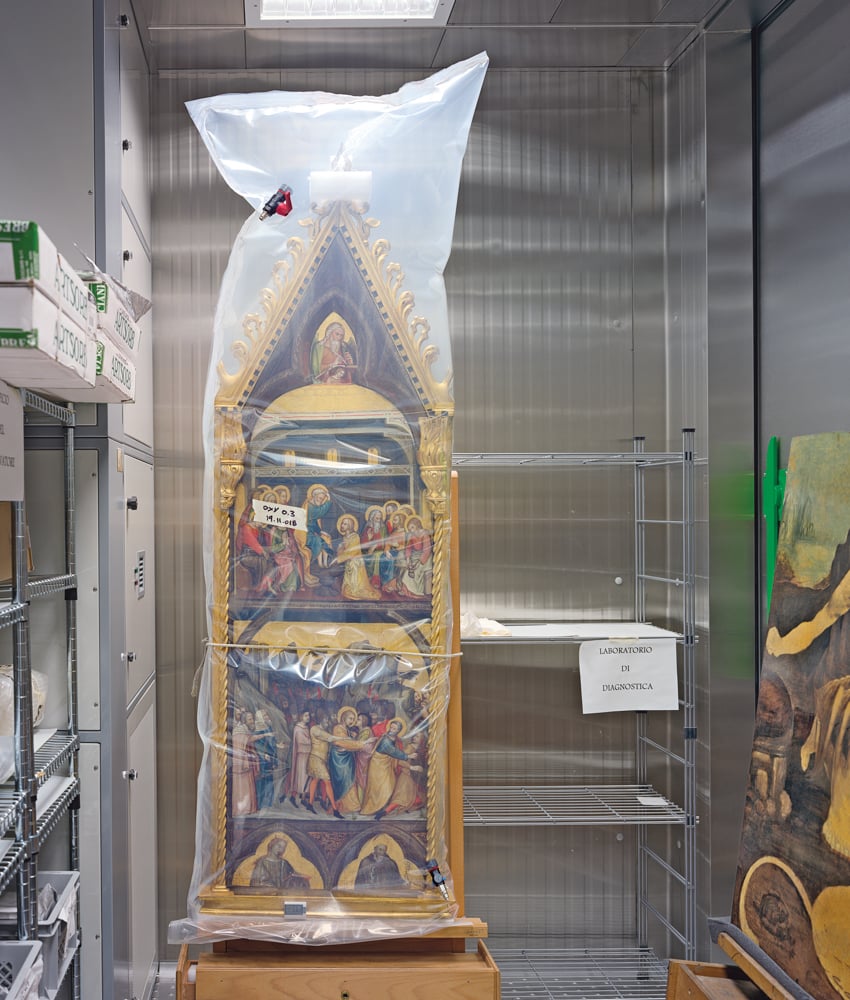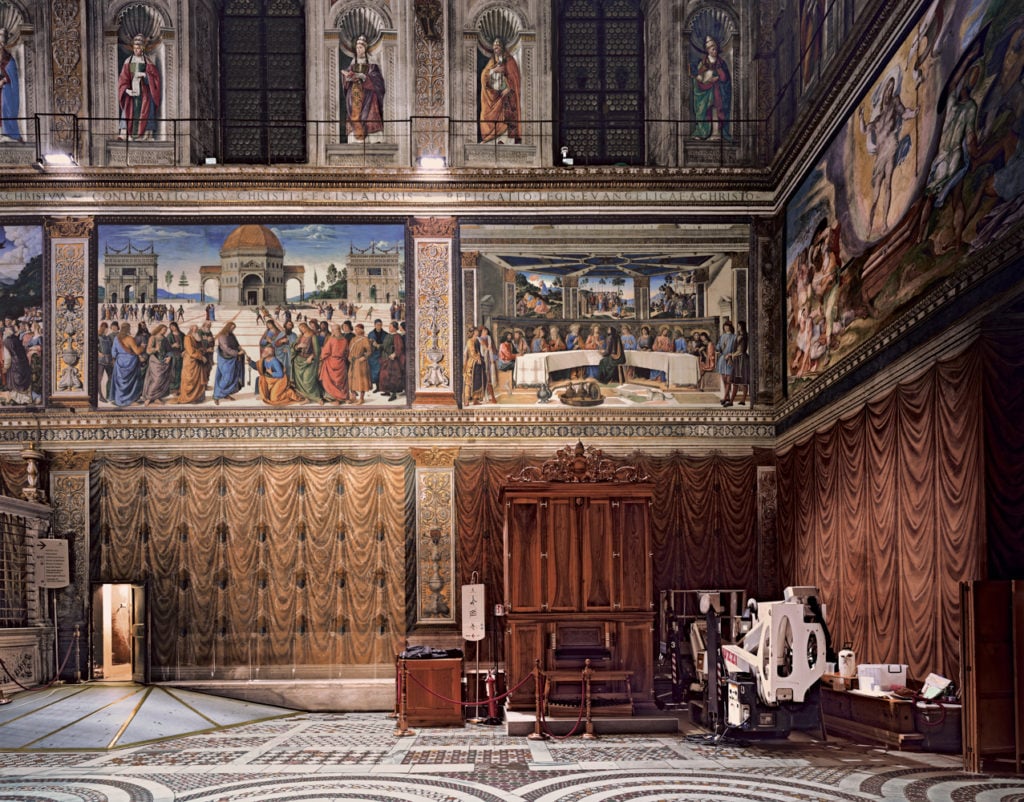restoration of the sistine chapel frescoes before and after
In the 1980s, the Vatican famously began an extensive restoration of the Sistine Chapel service, clearing inaccurate centuries of dirt and grime from Michelangelo Buonarroti's famed frescos. When that project ended in 1994, a hot matchless began: the careful monitoring and questionable "preventative preservation" of the works, which are now seen by close to seven meg visitors each year. The discover of the stake? Perpetual watchfulness.
In a special sub-rosa front, theWall Street Journal Magazine visited the chapel after hours to see how the delicate artworks are carefully monitored to make a point they are not vulnerable by contaminants brought in aside hoards of visitors (much than 1,000 can crowd together in at a time) who inadvertently track in dirt, dust, and leave behind traces of hair and skin.
To preserve the cap, the Vatican has installed LED lighting that doesn't emit UV rays and won't cause the paintings to fade. There is also a special HVAC system, donated in 2014 by the Carrier Corporation, that keeps the temperature constantly between 22 and 24 degrees Celsius (71.6 to 75.2 degrees Fahrenheit). To keep out impurities, four diffusers bring in and take out send. At night, staff members fastidiously debris and vacuum the entire museum. (All dust is analyzed to observe bacterium or fungus kingdom.)
"The humidity must ne'er constitute more 60 percent," Vittoria Cimino, the conductor of the Conservator's Power at the Vatican Museums, told the WSJ. "The carbon-dioxide even has to be kept depress than 800 parts per one thousand thousand. All these values throw to be kept stable. But the come of people in the elbow room makes that complex. It dismiss be ane, or it can beryllium a yar. The human body produces heat. And it produces carbon dioxide. If we have to, we behind completely change the air inside the chapel 60 times a twenty-four hours."

The Annunciation, a 16th-C work aside Marcello Venusti, inside the Vatican Palace Museums' Painting and Wood Materials Restoration Science lab. Photo by Robert Polidori for WSJ Magazine.
Throughout the day, a Vatican preservation technician is monitoring sensors in the Sistine Chapel service that track all of these variables.
But despite the Vatican's best efforts, thin layers of contamination inevitably develop. Carbon dioxide reacts to the plaster of the frescos. Through the process of condensation and evaporation, bacteria accumulates. The resultant role is an most imperceptible whitish glaze of soluble salts above the turn up of the painting. To forestall the work from being damaged, staff clean the frescos regularly and remove contaminants piece they are still soluble, using a crane-like machine nicknamed the Spider—a Multitel SMX 250 self-propelled tracked political platform—to accession the very important person paintings.
The Sistine Chapel was commissioned in 1473. Michelangelo painted the ceiling between 1508 to 1512, andThe Judgement Day from 1536 and 1541. The frescos happening the side walls are by artists including Sandro Alessandro di Mariano dei Filipepi and Domenico Ghirlandaio, Michelangelo's teacher. It's an incredible amount of art per right-angled edge in in a space fitting 132 feet by 44 feet—and if every goes well, it will be flash-frozen well into posterity.
See more than photos below.

Members of the Vatican Museums' conservation team, including (from left-hand) Matteo Alessandrini, Alessandro Barbaresi, Vittoria Cimino, Francesca Persegati, Alessandra Zarelli, Matteo Mucciante and Marco Maggi. Photo by Robert Polidori for WSJ Magazine.

A skipper conservator demonstrating a technique for removing contaminants from a Botticelli fresco in the Sistine Chapel. Photo by Robert Polidori for WSJ Magazine.

The Spider (the Multitel SMX 250) and the Sistine Chapel's cap. Photo aside Robert Polidori for WSJ Mag.

Maestro di Fossa's Histories of the Passion of The Nazarene, and part of Leonardo da Vinci's unfattened Saint Jerome in the Desert at the conservation lab at the Vatican Museums. Exposure past Robert Polidori for WSJ Magazine.

The north wall of the Sistine Chapel. Photo by Henry M. Robert Polidori for WSJ Cartridge.
Follow Artnet News on Facebook:
Want to stay onward of the artistic creation world? Sign in to our newsletter to go the breaking news, eye-opening interviews, and incisive critical takes that driving the conversation gardant.
restoration of the sistine chapel frescoes before and after
Source: https://news.artnet.com/art-world/conservation-sistine-chapel-1499899
Posting Komentar untuk "restoration of the sistine chapel frescoes before and after"